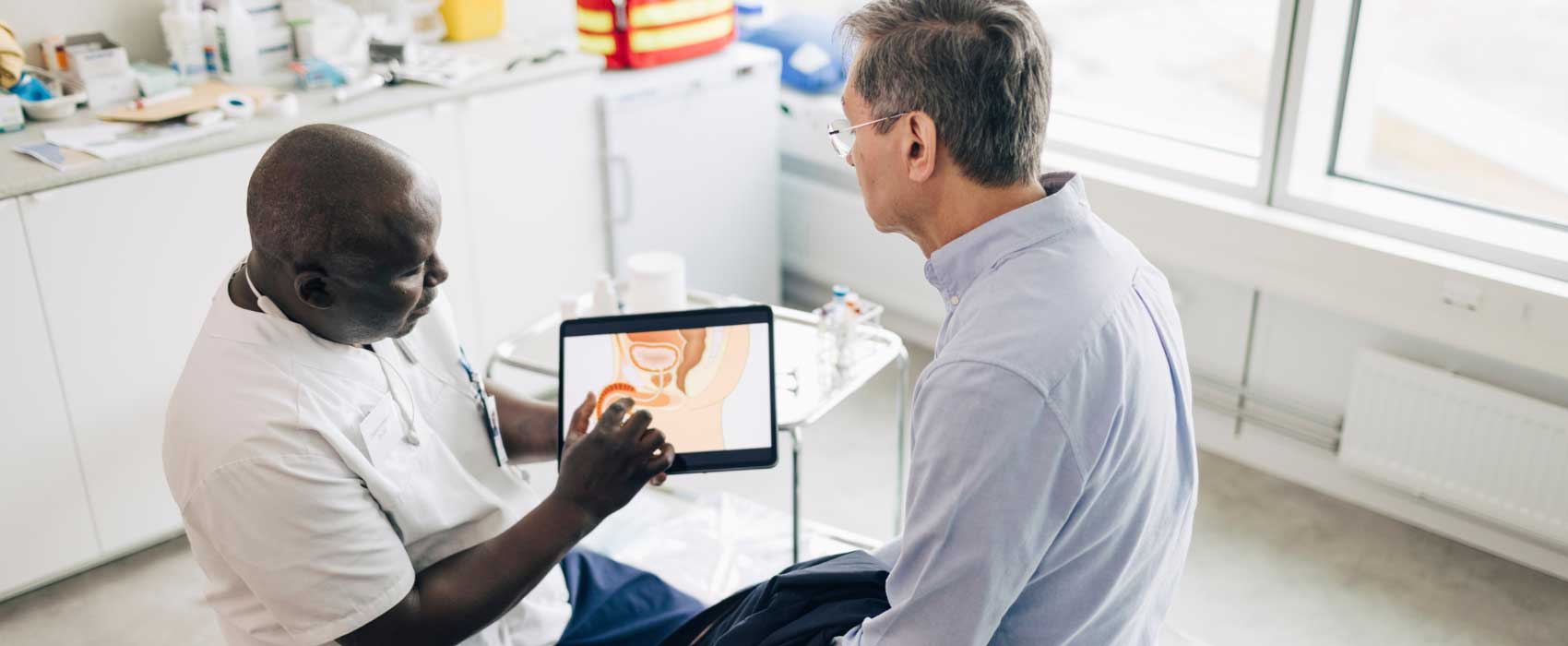
Spinal cord injuries (SCIs) occur when damage or injury affects any part of the spinal cord or associated neural pathways. They’re a serious condition that can result in full or partial paralysis. Spinal cord injuries create a disruption between your body and your brain, which can result in a loss of movement or changes to sensation and bodily functions. There are several different causes of spinal cord injuries, but the leading cause is motor vehicle accidents and falls. After a spinal cord injury, there will be changes to how you live your life and adjustments will need to be made. To help retain some autonomy in your daily functions, here is more information on how to self-catheterize after a spinal cord injury.
Bladder Problems Associated with a Spinal Cord Injury
Depending on the location and severity of your spinal cord injury, your ability to regulate your urine output may change. You may not be able to stop your urine stream, or you may not be able to control when you start urinating. Along with the negative effects that this can have to an individual’s quality of life, bladder problems associated with a spinal cord injury can also increase the risk for infection and other urologic problems. Your bladder will continue to function normally, but you may not be able to voluntarily control your bladder muscles. This is called neurogenic bladder and results in incontinence. It can increase your risk of developing a urinary tract infection, kidney infection, and kidney stones.
Due to spinal shock that occurs immediately following a spinal cord injury, you will need a device to help empty your bladder right away. This often involves using catheterization, which may be performed in the hospital while assessing the damage or extent of injury.
Once the initial shock wears off, some signals between your bladder and your brain may continue to be affected. To reduce complications, your doctor will work with you to learn how to use clean intermittent self-catheterization after a spinal cord injury. While it may be challenging at first, over time it will get easier. As always, if you have any questions, consult with your doctor or a medical professional.
Choosing a Catheter After a Spinal Cord Injury
There are several different options for catheters you can choose from following a spinal cord injury. The three main types of catheters that individuals with SCIs use include Foley catheters, intermittent catheters, and external catheters. Foley catheters, also known as indwelling catheters, are left inside the bladder for long periods of time. This simplifies care but can increase the risk of infection. Intermittent catheters are inserted and removed only to empty the bladder. They’re single-use medical devices that allow individuals to regain control of their bathroom schedules. External catheters are an option that’s used simply to catch the urine throughout the day, but they are not inserted into your bladder. To determine which catheter will work best for you, talk to your doctor about your options.
Learning to Self-Catheterize After a Spinal Cord Injury
Your life after a spinal cord injury will be drastically different, but you can still have a happy, healthy life. It’s important that you work with a physical therapist to continue your exercise regimen after a spinal cord injury to help with your ongoing recovery and treatment plan. With practice and adaptive tools, you can retain some autonomy. This is especially important for individuals when using the bathroom. To get started, here are a few tips on how to self-catheterize after a spinal cord injury.
Learn from Others
Research has suggested that patients with cervical spinal cord injuries that are below the C5 motor level are able to learn to self-catheterize, even if they possess limited hand dexterity. While it might be frustrating or difficult at first, it’s important to stay positive and keep trying. One of the best ways to do this is to learn from other individuals who are living with spinal cord injuries. This allows you to see how independence is possible and ask questions about how to overcome certain struggles. If you join a support group or find a group of friends with SCIs, don’t hesitate to ask personal questions. Every individual with a spinal cord injury started where you are today. After learning some new tips, continue to practice and don’t be afraid to fail. Eventually, you will find something that works for you.
Practice Good Hygiene
One of the most important aspects of self-catheterization is hand hygiene. By practicing good hygiene, you’ll prevent serious complications and infections from occurring. Always follow basic hand hygiene and go above and beyond when performing intermittent self-catheterization. This includes washing your hands properly and avoiding cross-contamination when inserting your catheter. If you have any questions or concerns regarding how to practice good hygiene during catheterization, talk to your doctor.
Use Adaptive Tools as Needed
If you have limited hand mobility or function, you can still self-catheterize. The key is finding an adaptive approach to the process. This can be supplemented using your clothes or even specially designed adaptive tools. Men who need to self-catheterize after a spinal cord injury can use the waistband of their underwear to secure the penis for self-catheterization. Women who perform self-catheterization will likely need a mirror to help, especially when you’re still getting used to it. There are also plenty of adaptive tools designed to help individuals with mobility restrictions, such as zipper pulls and devices to unbutton your pants. Be creative and don’t be ashamed of getting additional help.
Consider an Extension Tube
When performing self-catheterization, you’ll empty your bladder into the toilet. Most products come with a tube that is meant to be used by an individual sitting on or standing above a toilet. However, if you are performing intermittent self-catheterization with a spinal cord injury, this may not be an easy feat. Instead, consider using a catheter extension tube, which will allow you to empty your bladder without having to transfer from the wheelchair to the toilet.
Consider a Closed System Catheter
A closed system catheter can be easier to use and more hygienic, especially if you’re out in public. A closed system catheter is a pre-lubricated catheter that is contained within its own collection bag. These are especially beneficial to individuals who suffer from recurrent UTIs, as they reduce the chances of cross-contamination from inadequate hand hygiene or public spaces. This means that you won’t have to apply lubricant, and your hands don’t need to touch the part of the catheter that will be inserted into your bladder. Closed system catheters reduce the number of steps during the catheterization process, thus making it easier for those with mobility issues.
Be Persistent
Above all, one of the most important tips on learning how to self-catheterize after a spinal cord injury is to be persistent. You’re going to face some challenges and at times, want to give up. However, if you have an injury below the C5 motor level, you will be able to successfully self-catheterize. Get help when you need it but keep practicing.
Find Your Preferred Brand
While Foley catheters may seem like a logistically easier option, they can lead to chronic urinary tract infections when used for long periods of time. In addition to discomfort caused by these infections, untreated or chronic UTIs increase the risk of the infection spreading into your bladder and kidneys, which can be life threatening. If possible, using intermittent self-catheterization is the preferred method as the risk of infection is lower and the process can be done by individuals even if they have limited hand dexterity. There are several different types and brands of catheters available for you to choose from. To find the right option for you, talk to your doctor and sample a few catheters before you make a large order. There are options for hydrophilic catheters, coudé catheters, straight tip catheters, rubber catheters, and more.
If you or a loved one has suffered a spinal cord injury, getting the proper support, educational materials, and supplies is essential to a healthy, happy life. Be patient as you continue to adapt to your new circumstances and reach out to a loved one or medical professional if you need any assistance. To help, Byram Healthcare offers a wide range of urology supplies such as catheters and incontinence care. Browse our products today and have them discreetly delivered at your door—most orders ship within 2-3 days.




